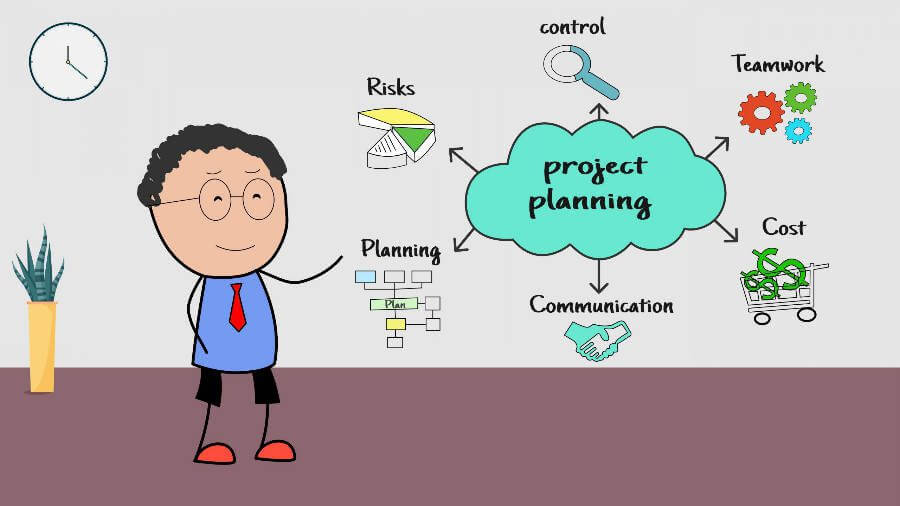What Are the 5 Phases of Project Planning?
Project planning is a subset of Project Management, and it refers to the use of schedules such as Gantt maps to plan and track progress within a project.
Think you’ve just been assigned a new project at work, and your mind is buzzing with ideas and possibilities. As exciting as it may seem, turning those ideas into reality requires careful planning and organization. Project planning is like building the foundation for a skyscraper; without a solid plan in place, your project may crumble under its own weight.
In this article, we will discuss the five essential phases of project planning that help project managers to complete projects on time and within budget.

What is the importance of Project Planning?
It is said that if there is no plan, people will go in any direction and no progress can be made. Planning is critical for success in project management. Planning is the first step in creating a successful project. If a project is not planned well enough, there will be no end to the problems that you will encounter. You will be constantly dealing with problems that you were not expecting. This will slow down the project and it will cost a lot of money. If you make a plan now for your project, then your project will be successful and you will be able to save a lot of money. If you have a plan for your project, it is much easier to manage a project.
Planning provides a guide for your project and for your team. It is what you have to do and what you need to accomplish. It helps in setting expectations and goals. This will help you to stay on track and to know when to expect completion of your project. Planning is also where you will find out if what you are doing is the right thing. If you are not planning your project well, then you will waste a lot of time and money and you will end up doing something that is not productive. Project planning is the backbone of the project.
Benefits of Project Plan
Once the project brief has been agreed by the project sponsors and approved by the main stakeholders, you can move into the detailed planning phase. The project plan can become a working tool that helps to keep the project team focused on the project’s tasks and activities and points them towards completion. It enables managers to keep track of resources, time and progress towards achieving objectives.
A project plan provides a roadmap for all project activities. It also defines the project’s objectives and outcomes and sets the milestones for each phase of the project. It should be a working document that defines the steps involved in the project, often called tasks.
A project plan allows you to monitor your progress and measure the project’s achievements. It also helps you to understand the project’s complexity better and helps in identifying any gaps that might exist in the knowledge. It lets you easily identify opportunities that could be used to improve the project management and/or to speed up the implementation of the project.
5 Steps Required for Planning a Project
1) Initiation/Conception
The creation of a new project is known as “project initiation.” You will need to decide how long you need to create your project. This is the project’s first step and aims to describe the project in general terms. A business case is usually the first step in this process. This is where one must investigate if the proposal is viable and worthwhile. It will be done during this project stage.
2) Project Planning
This step is critical to project management progress and focuses on creating a blueprint everybody can obey. Setting targets is usually the first step in this process. Two of the more popular methods for setting goals are S.M.A.R.T. (Specific Measurable Attainable Realistic Timely) and C.L.E.A.R. (Collaborative Limited Emotional Appreciable Refinable)

3) Project Execution
Deliverables are created and completed during this process. Since there is so much going on at this period, such as status reviews and workshops, development plans, and success reports, it can feel like the meat of the project.
4) Project Performance/Monitoring
This is all about monitoring project development and success and checking that everything is progressing according to schedule. Main success metrics (KPIs) can be used by project management to assess whether the project is on schedule.
5) Project Closure
This process signifies the end of the plant. At this stage, contractors hired exclusively for the project are fired. Team members who have contributed significantly to the organisation’s growth are honoured. Some project managers go so far as to arrange small job activities for project participants to thank them for their contributions.
Conclusion
While the project manager and project team have one shared goal: to carry out the work of the project for the purpose of meeting the project’s objectives. Every project has a beginning, a middle period during which activities move the project toward completion, and an ending (either successful or unsuccessful). Project planning is at the heart of the project life cycle and tells all involved where things are going and how it will get there. The main reason for project planning is to describe each noteworthy task evaluating the time and the assets required for the success of project itself. The project plan gives a structure of the administration survey and control characterizing different planning exercises.

